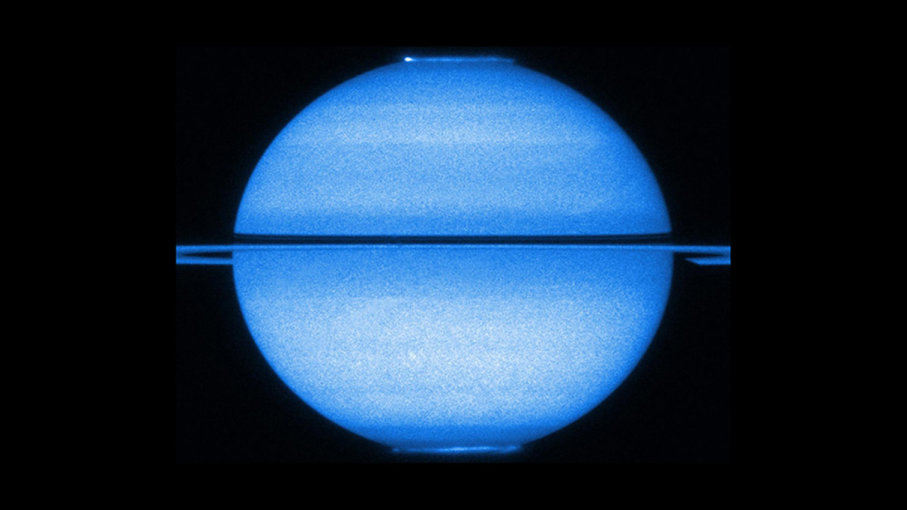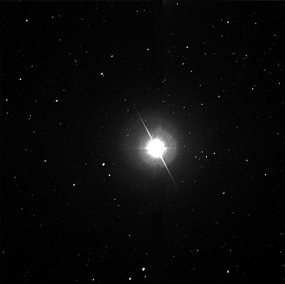Yes @Soretna , I will search for that . Meanwhile I have further updated my earlier post in this trail , with some interesting biological trivia about some fruits , plants and animals - you might like that !
Regards

Yes @Soretna , I will search for that . Meanwhile I have further updated my earlier post in this trail , with some interesting biological trivia about some fruits , plants and animals - you might like that !
Regards
@soretna , I found that there is an entire category of stars classified as "egg shaped stars"...hmm ! One of the best examples is Vega , a star that in the year 14,000 A.D. , as per it's current trajectory through space , is expected to replace Polaris ( Alpha Ursae Minoris) as Earth's Pole star .
You know what's the weirdest fact about this star ? It's temperature at the Poles is an insane 30% HOTTER than it's equator !!
Most of us have seen Vega, the 5th brightest star in the night sky. But up close, Vega looks nothing like a typical star. It rotates so fast — over 600,000 miles per hour at the equator — that it bulges into an oblate, ovular shape, kind of like a chubby blue egg. Scientists estimate that Vega is spinning at about 90% of its maximum possible rotational speed. It if were turning just 10% faster, the spin would overwhelm Vega’s gravity and rip it apart.
Vega rotates so fast that it is cooler as well as wider at its equator than at its poles (Credit: J. Aufdenberg and NOAO/AURA/NSF)
As if being egg-shaped isn’t odd enough, Vega doesn’t shine evenly like our Sun either; rather, the star’s bulging equator shines less brightly than the poles, giving it a darkened stripe on its surface. Scientists think the stripe is a result of temperature variations caused by Vega’s insane rotational speed. Since the equator is cooler, it shines less brightly, giving it a darker color in contrast with the poles.
In other words, not only does Vega look like a blue egg: it looks like a striped, decorated blue Easter egg. Think about that next time you spot the constellation Lyra, where Vega outshines nearby stars ,and hides its bizarre secret from the unaided eye.
**Now also take a look at this mainstream science article - "Why are planets ALMOST SPHERICAL" (but NOT truly spherical) , it spills the beans in the headline itself , the cat is out of the bag now :))
by Mark Mancini Jun 24, 2019

In this photo of Saturn, snapped by Hubble, you can see the bulge in the ringed planet's middle. NASA/ESA/STScI/University of Leicester
It's something we kind of take for granted. Roses are red, and planets are spherical. That's just the way things are, right? After all, building model solar systems would be way more challenging if, instead of using little foam balls, we had to make a bunch of icosahedron-shaped planet models.
But have you ever wondered why the planets look like this? Why are they basically spherical and not, say, cylindrical or cube-shaped?
We should kick off this discussion by calling a spade a spade. None of the planets in our solar system are perfect spheres, nor for that matter is our sun. All those bodies could more accurately be described as "oblate spheroids." Objects with this shape bulge slightly around the middle. To borrow an analogy from the astronomer Phil Plait, they look like a basketball that someone is sitting on.
Put more technically, in a celestial body with an oblate spheroid shape, the polar circumference will be smaller than the equatorial one. So here on Earth, if you were to travel from the North Pole to the South Pole and back, you'd have walked a grand total of 24,812 miles (39,931 kilometers). On the other hand, a complete trip around the equator would be a bit longer. That's because the circumference of Earth's equator is 24,900 miles (40,070 kilometers). As such, when you stand at sea level on the equator, you're farther away from the center of our planet than you would be at either pole.
On some other planets, this bulge is even more pronounced. Just look at Jupiter. Earth is only 0.3 percent wider at the equator than it is from pole to pole. But Jupiter's measurements showcase a much bigger disparity. Indeed, astronomers have found that this plus-sized planet is a full 7 percent wider at its equator than it is between the poles.
The oblate spheroid shape is the result of two main factors: gravity and rotation. Troy Carpenter, director of Washington State's Goldendale Observatory, recently discussed the matter with us in an email exchange. "Everything which has mass experiences gravity, and gravity attempts to crush an object inward in all directions," Carpenter explains.
That's because all objects experience self-gravity, a force which pulls their atoms toward a common center. As the mass of an object increases, so too does its self-gravitational pull. After it exceeds a certain mass, the pull gets overpowering to the point where the object collapses onto itself and becomes spherical. Little items — like, say, a banana or a lug wrench — can resist this fate because their self-gravity is relatively weak, allowing them to retain non-spheroid shapes. However, in planets, suns and other truly massive bodies, the force is so strong that they can't avoid being distorted into spheroids.
"But gravity is not the whole story," says Carpenter. While gravity conspires to render the planets spherical, the speed of their rotations is simultaneously trying to flatten them. The faster a celestial body spins, the more disproportionate its equatorial bulge gets. "This is why there are no perfect spheres in our solar system ... only oblate spheroids," Carpenter tells us. "The sun is almost a perfect sphere, due to its immense gravity and relatively slow rotation rate of 25 days. A significant percentage of stars in the sky rotate much faster and bulge noticeably at their equators."

Stars, like Altair pictured here, are subject to midriff bulges, too.
NASA/JPL/Caltech/Steve Golden
One such star is Altair. Located just 16.8 light-years away from our home planet, it's among the brightest objects in the night sky. Altair is also notable for spinning very, very rapidly and completes a full rotation on its axis every 10.4 earth hours. Accordingly, astronomers estimate that Altair is at least 14 percent wider at the equator than it is from pole to pole. Rotational speed also explains Jupiter's bulge. After all, a day on this gas giant is a brisk 9.9 earth hours long.
Other forces act upon the stars and planets as well, altering their shapes. Although Earth is an oblate spheroid, it certainly isn't a perfect one. The gravitational pull of the sun and moon both influence the planet's shape to a degree. For that matter, so do Earth's own plate tectonics. Consequently, the mass of our home world isn't evenly distributed — in fact, it's rather lumpy.
Still, it looks a good deal rounder than Jupiter (and Saturn). In turn, the planets in our universe appear way more spherical than some of their moons do. Mars, for instance, has two small satellites, neither of which has the self-gravity to be pulled into an oblate spheroid. Instead, their appearance is often described as potato-shaped.
In conclusion, we'll say this much for our home planet: It may not be flawless, but at least the place is fairly well-rounded.
Regards
Don't you just love how speculative all of the articles and remarks are? It makes me somewhat ill to read these since they have ZERO data upon which to base these speculations. Clearly all of the theoretical foundation they're using is flawed, but they just go on ahead with some kind of innate capacity to ignore these incongruencies.
@Soretna , you're right...over the years , as I myself have gotten deeper and deeper into Hollow Planet research , I believe less and less of mainstream science.
They have a tendency to pass off even their idle speculations as indisputable fact - their attitude is such a huge disservice to the cause of science and is an obstacle to furthering mankind's understanding of the Universe .
**Folks : By the way , I fully 100% stand by my own comments on planetary shape , made in my previous posts earlier in this same trail (for those who may have missed those) , including what is said in them about the associated esoteric symbolism - I TRULY believe that holds the key !
Regards
Sidhartha,
Yu know, when astrologers calculate horoscopes in the very high latitudes, such as St. Petersburg in Russia or in Scandanavia, they have difficulty because the curvature changes its degree of slope. I don't knw if there are any programs that take the curvature into account, and if they do, I would wonder if they do so very accurately.
And what about Neptune and Uranus?
Cheers!
@deandddd , I agree - since astrology is derived from astronomy , reduced curvature at certain points of Earth , such as the Poles , can make a difference to the results .
Also the influence of Uranus and Neptune has to be factored in , to get more accurate readings .
Regards
Sidhartha,
But do you know anything abu the curvature and flattening of Uranus and Neptune?
Dean
@deandddd , if you are referring to the general shape of planets Uranus and Neptune , then yes - of course , they too are "egg shaped" , or apple shaped , on a closer look.
I wish to also explain how both the humble egg and the ordinary apple can be esoteric symbols for shape of stars and planets :-
When the physical shape alone is being referred to (from a vantage point at a great distance) , minus all the emissions of energy , plasma etc. , then the "cosmic egg of creation" or egg maybe used
When the shape as well as the energetic emissions from the Polar openings is to be depicted (from close up) , then an apple can be used as the symbol , with it's stalk representing the Polar emissions etc.
Regards